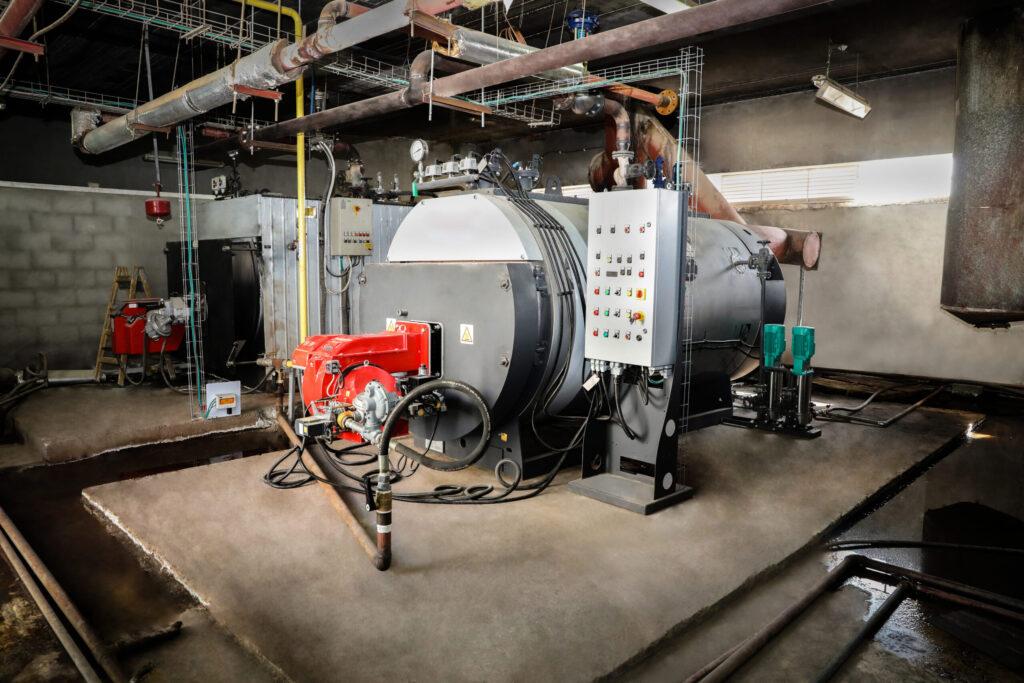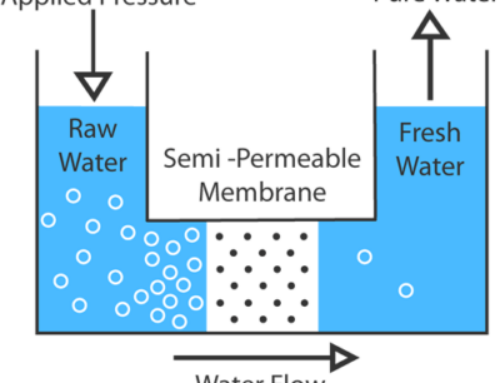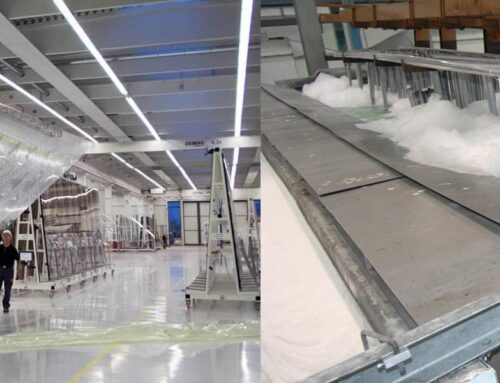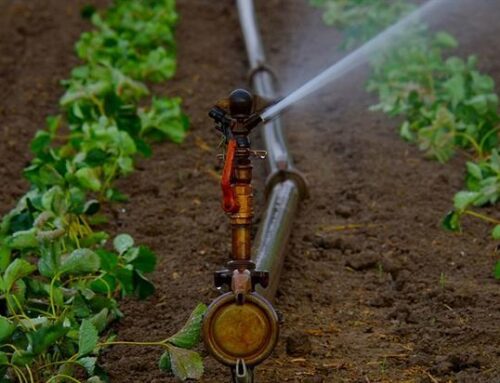RO Steam Boiler Feed

The Benefits Of An RO Steam Boiler Feed
The benefits of Steam Boiler Feed RO in reducing maintenance costs and improving energy efficiency.
Paul Godfrey, Managing Director at Puretech Water Systems (UK) Ltd is a designer, manufacturer, and installation / maintenance specialist in water treatment systems. Here, he considers the key benefits of Reverse Osmosis water as feedwater for boilers and how this facilitates reducing boiler blow down periods.
The drastic rise in energy costs have left many estates managers looking for avenues that lead to cost savings across their department. Steam boilers are important components for heating applications and water is the most used fluid in these heating processes primarily due to its relative abundance and high heat capacity. Large amounts of water are required and often there is potential for water saving. This saving results in lower water and sewer bills and decreased treatment costs.
Improving Boiler Feed Water Quality: A Pragmatic Approach for Cost Reduction and Energy Efficiency
Boiler feed water quality control is a pragmatic approach being taken by many to reduce costs. Simultaneously, this can improve the energy efficiency of the steam boiler system.
The feed water received by the boiler consists of a varying proportion of recovered condensed water (return water) and fresh water. This water has been purified in varying degrees (make-up water). The make-up water is usually natural water either in its raw state or treated prior to use.
Feed-water composition depends on the quality of the make-up water and the amount of condensate returned to the boiler. The steam, which escapes from the boiler, frequently contains liquid droplets and gases. Water that remains in liquid form at the bottom of the boiler picks up all the foreign matter. This is from the water that was converted to steam.
These impurities must be blown down by the discharge of some of the water from the boiler to the drains. The permissible percentage of blow down at a plant is strictly limited by running costs and any initial outlay. In order to mitigate maintenance costs, it is considered best practice to reduce this percentage to the smallest figure possible.
Feed Water – Sources & Variations
Properly conducted boiler feed water treatment is an integrally important part of operating and maintaining a boiler system. As steam is produced, dissolved solids become concentrated and form deposits inside the boiler. This invariably leads to poor heat transfer and reduces the efficiency of the boiler. Dissolved gasses such as oxygen and carbon dioxide will react with the metals in the boiler system. Subsequently. this will ultimately lead to boiler corrosion.
Excessive levels of impurities cause corrosion and inhibit the boilers efficiency in heat transfer and overall distribution. Impurities that are often present within the system often include, but are not limited to:
- Alkalinity (CaCO3)
- Carbon Dioxide (CO2)
- Calcium (Ca)
- Calcium Phosphate (Ca3(PO4)2)
- Chlorides (Cl)
- Hydrogen Sulphide (H2S)
- Manganese (Mn)
- Magnesium (Mg)
- Iron (Fe)
- Oxygen (O2)
- Silica (Si)
- Sodium (NaOH, NaHCO3, Na2CO3)
- Sulphates (SO4)
Suspended solids and other organic and in-organic matter are often attributed to causing sediment build up and turbidity (suspended solids) in closed systems.
Treatment is advisable to protect the boiler from these contaminants. The specification for this treatment always depends on the type and material of the boiler, the incoming water source, the type of heater that is used and the pressure that the system runs at.
Thereupon, several different parameters need to be monitored to prevent corrosion, fouling and scaling.
Adhering To Manufacturer Recommendations
Boiler manufacturers set important parameters for the levels of conductivity, total dissolved solids (TDS), and the pH of the water.
Investing in the latest reverse osmosis (RO) technologies provides ultra-pure water as the feedwater for a steam boiler. This results in significantly reduced levels of conductivity. Majority of steam boilers are blown down based on the levels of conductivity contained within the boiler chamber. Typically, the blow down set point for most steam boilers is 2,500 microsiemens (µS). Water softening plants alone improve feed water quality drastically but only provide conductivity levels of around 350 µS – 750 µS (depending on the conductivity of the incoming water supply, which varies from region to region).
Generally, we have seen these conductivity levels lowered by 95% – 99% with the commissioning of a designated RO to feed the steam boiler. Conductivity levels are typically reduced to 10 µS – 30 µS. The Carbon Trust state that a boiler operating on 10 bar of pressure, every 1% that is saved in blow down, there is a 0.2% saving in fuel. Reverse Osmosis treated make-up water has the capabilities to produce a fuel saving of well over 2%.
The best configurations utilising the wide range of water treatment technologies available on the market provides the best results. Prefacing the reverse osmosis system with a carbon vessel and ion exchange softening vessels ensures the longevity of the RO plant. This includes all the associated consumables, protecting various perishable consumable items such as multimedia filtration media and membranes from damage.
Reducing Total Dissolved Solids (TDS) Counts With RO Steam Boiler Feeds
Boiler blow downs are a known requirement for all steam boilers in order to retain a maximum allowable concentration of salts and other dissolved solids within the water contained in the boilers chamber. Reverse osmosis make-up water lowers the overall TDS count and negates the need for more traditional forms of treatment to protect boilers from internal scaling and corrosion such as using phosphates and sulphites to protect the boiler. The purification process of the make-up water leads to lower TDS counts.
In turn, this results in a reduction in the use of anticorrosion agents and the amount of chemical conditioning that is required, thereby reducing costs further.
All the aforementioned factors minimise the TDS count and prolong the period between required boiler blow downs whilst simultaneously ensuring and maintaining efficient boiler operation, leading to energy savings. Fewer blowdown cycles leads directly to a reduction in the chemical treatment of the make-up water.
RO Steam Boiler: System Optimization
Boiler blow downs are a known requirement for all steam boilers in order to retain a maximum allowable concentration of salts and other dissolved solids within the water contained in the boilers chamber. Reverse osmosis make-up water lowers the overall TDS count and negates the need for more traditional forms of treatment to protect boilers from internal scaling and corrosion such as using phosphates and sulphites to protect the boiler. The purification process of the make-up water leads to lower TDS counts.
In turn, this results in a reduction in the use of anticorrosion agents and the amount of chemical conditioning that is required, thereby reducing costs further.
All the aforementioned factors minimise the TDS count and prolong the period between required boiler blow downs whilst simultaneously ensuring and maintaining efficient boiler operation, leading to energy savings. Markedly, fewer blowdown cycles lead directly to a reduction in the chemical treatment of the make-up water.
Find Out More
Puretech Water Systems (UK) Ltd specialise in water treatment and process filtration. We work across multiple sectors providing water processing solutions.
Interested in finding out more about the boiler feed pre-treatment solutions, services and systems we provide?
Find more information here: http://puretechsystems.co.uk/boiler-feed/




